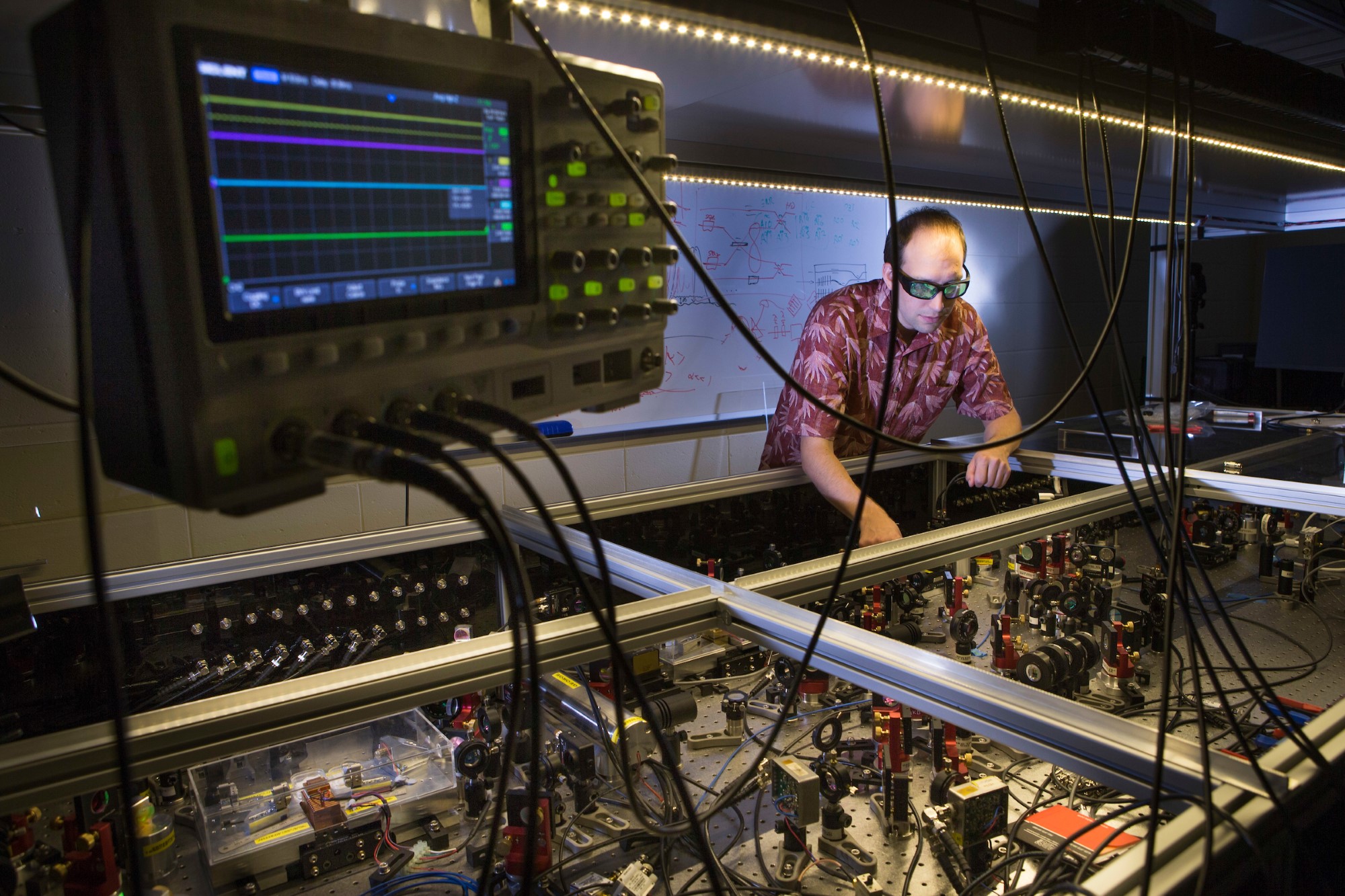
Research projects
Discover the forefront of astronomy and astrophysics through our projects, ranging from deep-space communication systems to groundbreaking adaptive optics. Explore our diverse, ongoing research initiatives shaping the future of space science.
Displaying 16 - 30 of 75 project(s).
The AITC requires a generalised adaptive optics (AO) test bench in order to test experimental and research AO designs and technologies, as well as to verify AO instrumentation. The test bench will be built using in house optical components and be driven by software written in Python.
Theme
- Instrumentation
Student intake
Open for Bachelor, Honours students
People
- Dr Israel Vaughn, Supervisor
- Dr Jesse Cranney, Supervisor
- Dr Noelia Martinez Rey, Supervisor
Ambitious students will investigate optimal ways to measure the stellar properties (eg Teff, age, mass) and chemical composition of this immense amount of data.
Theme
- Galactic archaeology
- Stellar and planetary astronomy
In this project you will use existing and new data to understand the nature of filamentary structure in galaxies and how they relate to magnetic fields.
Theme
- Galactic archaeology
- Structure and evolution of the Cosmos
Student intake
Open for Bachelor, Honours, PhD students
People
- Professor Naomi McClure-Griffiths, Supervisor
In the spectra of distant stars, we can often find a series of absorption features, such as Diffuse Interstellar Bands (DIBs) or those of neutral atomic potassium, K I. Although the exact carriers of DIBs are still a matter of debate, various candidates have been proposed over the years.
Theme
- Galactic archaeology
Study of the statistics of turbulent, magnetised gases, relevant for the structure and evolution of the interstellar medium, the formation and evolution of stars and galaxies, using a combination of supercomputer simulations, theory, analytical calculations, and comparison to observations.
Theme
- Stellar and planetary astronomy
- Structure and evolution of the Cosmos
Student intake
Open for Bachelor, Honours, PhD students
Observatory
People
- Professor Christoph Federrath, Supervisor
In each project, students will utilise data from some of the world’s most powerful radio telescopes, including ASKAP, Parkes, and the Jansky VLA to study the magnetised gas in and around the radio lobes inflated by supermassive black holes.
Theme
- Black hole phenomena
- Structure and evolution of the Cosmos
Student intake
Open for Bachelor, Honours, PhD students
Observatory
People
- Dr Craig Anderson, Supervisor
This project involves instrument modelling, science simulation, electro-optical, and system design of a compact spatial heterodyne spectrograph instrument.
Theme
- Instrumentation
Containerised applications can improve modularity when interfacing hardware from different vendors across a variety of machines.
Theme
- Instrumentation
Student intake
Open for Bachelor, Honours students
People
- Dr Jesse Cranney, Supervisor
- Dr Michael Copeland, Supervisor
Containerised applications can improve modularity when interfacing hardware from different vendors across a variety of machines.
Theme
- Instrumentation
Student intake
Open for Bachelor, Honours students
People
- Dr Jesse Cranney, Supervisor
- Dr Michael Copeland, Supervisor
Magnetic fields are present throughout the universe on all scales: from planets and stars, star-forming clusters and spiral arms, entire galaxies, to galaxy clusters and cosmic filaments.
Theme
- Galactic archaeology
- Structure and evolution of the Cosmos
This project aims to conceptualize a UV astronomical space mission to explore the interstellar medium (ISM) in the Milky Way and nearby Local Group Galaxies. Utilizing recent UV coating and detector advancements, the proposed mission involves high-throughput, compact UV spectroscopic instruments.
Theme
- Instrumentation
- Structure and evolution of the Cosmos
Student intake
Open for Bachelor, Honours students
People
- Dr Andrew Battisti, Supervisor
- Dr Joice Mathew, Supervisor
This project aims to conceptualize a UV astronomical space mission to explore the interstellar medium (ISM) in the Milky Way and nearby Local Group Galaxies. Utilizing recent UV coating and detector advancements, the proposed mission involves high-throughput, compact UV spectroscopic instruments.
Theme
- Instrumentation
- Structure and evolution of the Cosmos
Student intake
Open for Bachelor, Honours students
People
- Dr Andrew Battisti, Supervisor
- Dr Joice Mathew, Supervisor
Ultraviolet photometry has revealed that young open clusters in the Milky Way display extended main sequence turn-off in the colour magnitude diagram.
Theme
- Galactic archaeology
- Stellar and planetary astronomy
Student intake
Open for Bachelor, Honours students
People
- Associate Professor Luca Casagrande, Supervisor
In this project you will develop use and further develop the Chronostar tool to identify thousands of previously unknown young stars near the sun - ideal targets for future exoplanet detection campaigns.
Theme
- Stellar and planetary astronomy
In this project you will develop use and further develop the Chronostar tool to identify thousands of previously unknown young stars near the sun - ideal targets for future exoplanet detection campaigns.
Theme
- Stellar and planetary astronomy
